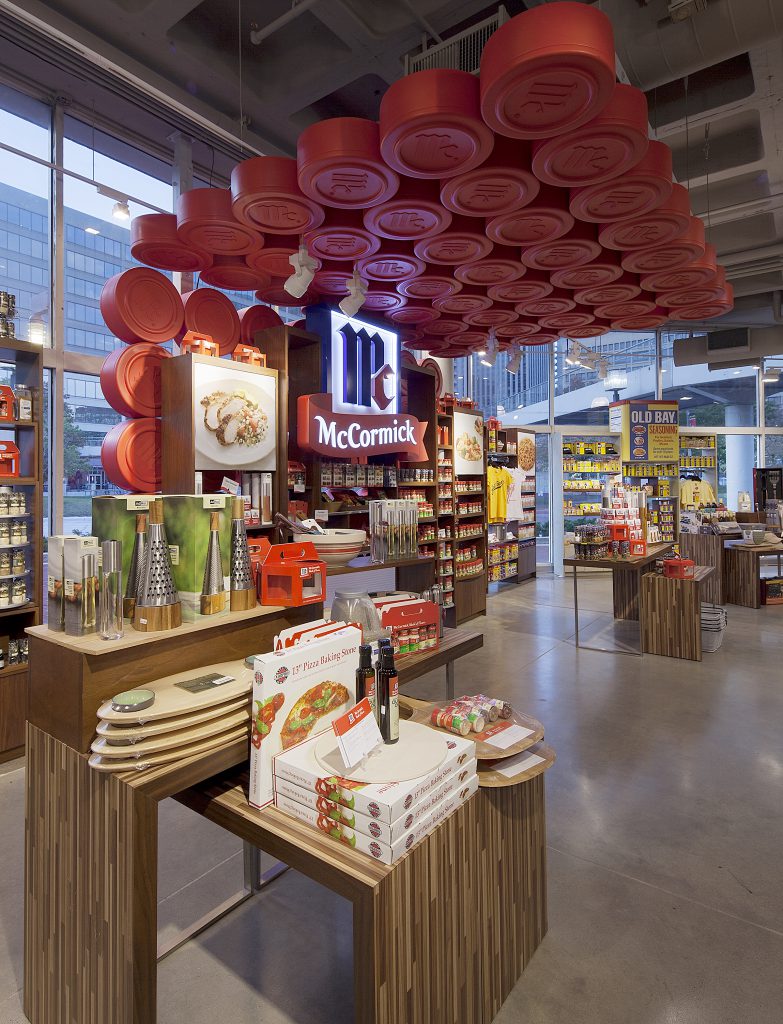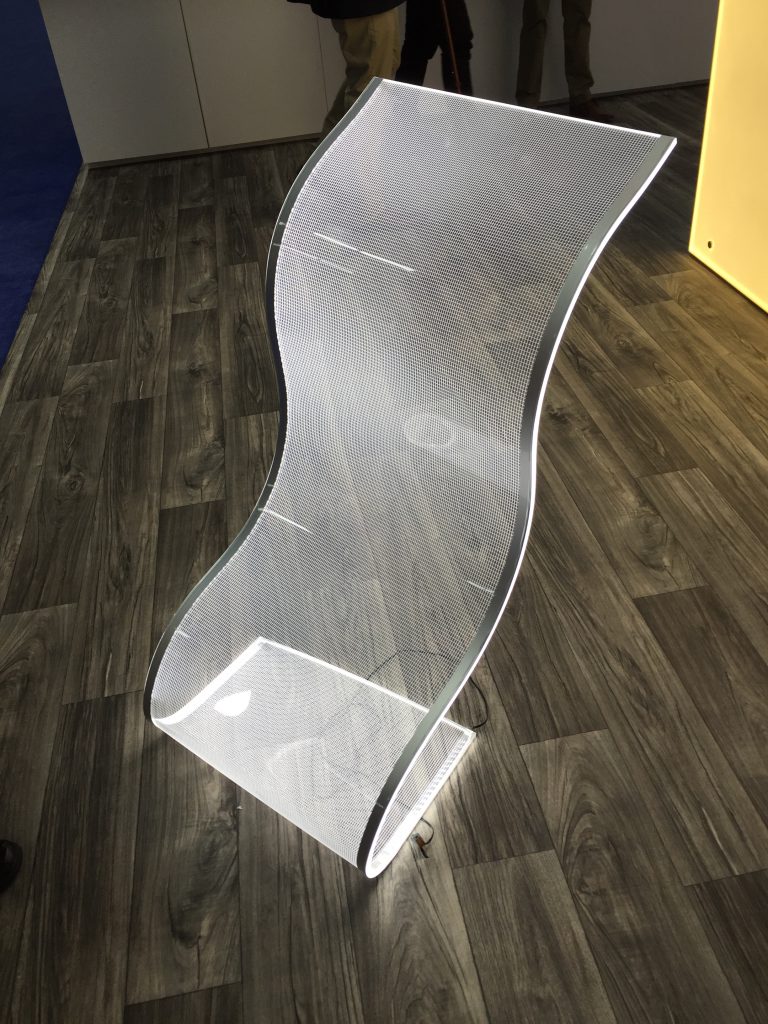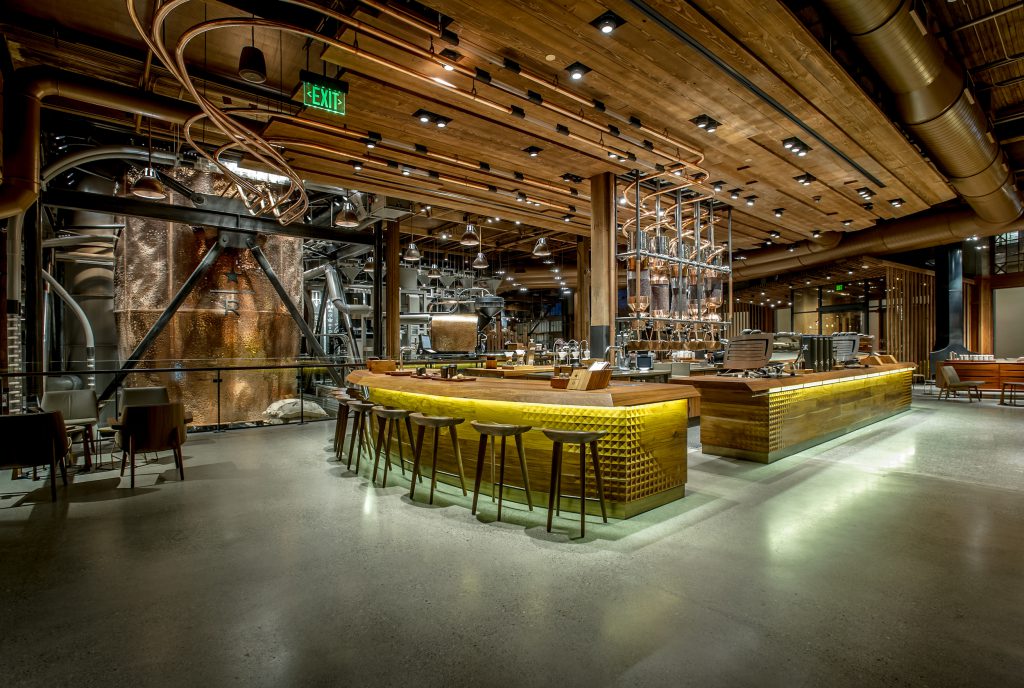by Michelle Hespe
We speak to Anne Kong, expert juror from the IHA Global Innovation Awards (gia), about fresh trends in sustainable retailing.
When brands like Apple make big changes in their approach to retail and branding, you know there’s change a-foot. In Apple’s new stores, the products are still the main drawcard, but the clever place-making is what makes people linger longer. Cozy leather seating beneath trees in indoor gardens, staff milling about like friends, wooden furniture that could be in your own home, and lighting that seems more like natural sunlight all make for a calming, lovely space.
As the retail industry turns another vast and sweeping corner, the new Apple store is one example that highlights four sectors in sustainable retail fit-outs where new trends are emerging: place-making, lighting, use of wood materials and logistics.
Place-making
Place-making has always been around. Essentially, it’s what any business (or the government when it comes to public spaces) aims to do: create a great place where people feel welcome and happy. Most of us also do it with our own homes—create places that make ourselves and others feel welcome enough to want to stay.

Although everything is becoming “smarter” and technological developments continue to pop up at breakneck speed, people are increasingly drawn to spaces that feel more connected with the “real world.” More and more spaces and places are promoting organic, holistic living and the benefits of being more grounded, social and even philosophical.
Place-making is a relatively new term in brick & mortar retail, because as more and more people shop online, it’s more crucial than ever that retailers create places and spaces that make people want to venture to them, and stay for longer than they normally might.
“Materials and production processes are essential in communicating the essence of brands and the brand story,” says Anne Kong, an educator and designer specializing in Visual Presentation, Exhibition and Special Events. “And we realize that the store environment is more than a space to sell goods; it is a place for the shopper to connect with the brand socially, make memorable experiences and develop a loyalty based on the look, style and feel of the brand. Materials play a convincing role in brand recognition as they visually communicate through rich woods, bold color, invigorating texture or soothing fabrics. Materials are essentially the ambassadors of the brand.”
Light
Retail store lighting is another sector undergoing a rapid change relating to sustainability.

“Completely overhauling a store’s existing system with new LED lighting can be extremely expensive, and it can take three to five years for the savings to be realized,” says Anne in the new book she co-authored with Martin M. Pegler, Visual Merchandising and Display – 7th edition. “This has generated the more affordable trend of upgrading as opposed to complete refurbishments for many stores. The most popular trend in lighting is energy-saving retrofits. Retrofitting is a term often used when converting older, outdated lighting technologies.”
Anne says that retailers are seeking new sources for light that are more energy efficient, and that the latest lighting is OLED — organic light-emitting diodes.
“OLED comes in the form of large, flat wall or ceiling panels,” she explains in the book. “Without using any bulbs, the panel-shaped fixture allows for a more even distribution of light over a wider space without the need for additional components to distribute the light. Due to its low intensity, there is very little of the glare and harsh shadowing that you might get with single-point lighting. OLEDs are known for producing the kind of high-quality illumination that closely resembles natural sunlight. Although many high-end LEDs have been able to achieve this, OLED also tends to be superior at bringing out the true colors of the store surroundings, fixtures and merchandise.”
Wood
Anne’s new book also has a section on the use of wood in retail fit-outs. “Designers are now commonly mixing wood with other raw materials to achieve urban appeal or Zen style, or to send a message about sustainability to their clients,” she says.

“Hundreds of wood varieties have flooded the marketplace, including wood that is recycled or rescued. Wood rescued from beneath waterways, or taken from existing building structures, is currently one of the most popular materials for store environments and fixtures. Fortunately, reclaimed wood helps to reduce the need to harvest existing forests to meet the current demand.”
Featured Image Photo Credit: Starbucks/Tazo Tea Display, Fixturing by ALU International
Read the next Inspiration Magazine article: Top Retail Trends for Consumer Engagement



